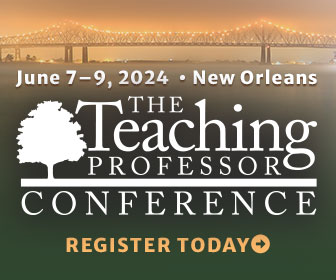It isn't always easy to put the ideas of others into your own words, especially if you don't completely understand what you're trying to paraphrase. But even though it's a struggle, it's often worth the effort. The process of doing so almost invariably deepens the understanding.
Teachers ask students to read all sorts of texts that they find difficult. There are issues such as new vocabulary, long and complex sentences, and new and complicated ideas. Students aren't used to reading materials like these, and many don't tackle them with sophisticated reading skills.
Fortunately, teachers can help. They can use strategies that improve reading comprehension skills and develop those useful paraphrasing skills as students are doing reading assigned in the course. A great example is Daniel Lloyd, who uses this strategy in all his undergraduate theology courses. He assigns various kinds of required written work (worksheets, short papers, and online discussions) in which students respond to materials in primary and secondary texts. Students must follow these rules: no quotes from the reading, and for every sentence they write that uses information in the text, they must provide a page number citation. If back-to-back sentences use text content, that's fine, but they must include the page citation.
The strategy has lots going for it, starting with the way it encourages close reading of the text. You can't put into your own words what someone else has written without reading carefully. The more carefully the text is read, the better it is comprehended. Students can quote from a passage without necessarily understanding the content. They may recognize at a superficial level that the content is relevant to the professor's prompt, but using a quotation does not require the careful reading necessary to construct a paraphrase. And it is that careful reading and the accompanying mental processing that begin to develop the kind of critical reading skills students need in college and in life.
Additionally, a lot of research now documents that many students do not understand plagiarism. They know it's wrong. They know it's something they aren't supposed to do, but frequently they don't know how to avoid it. Often because they aren't strong writers, they fall into using the author's words and not their own. This strategy gives them the practice necessary to learn how to paraphrase, which means the strategy is also developing writing skills.
Lloyd identifies a final benefit. When students are working closely with the content in a text and rewriting the ideas, it becomes difficult to “press the text into saying what they would prefer it to say” (p. 387). Careful reading and paraphrasing tend to make the message of the text clear. Students may disagree, but they are less likely to use the source to support a position that it doesn't, in fact, support.
It probably won't be an especially popular strategy, but with teacher support and plenty of opportunities to practice, students will end up developing a skill set that will make the work in many courses easier and more productive.
Reference: Lloyd, D. (2016). No quotations, always citations. Teaching Theology and Religion, 19(4), 387.








